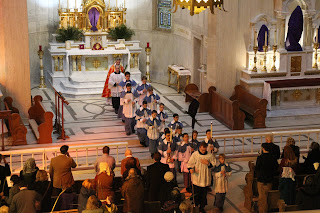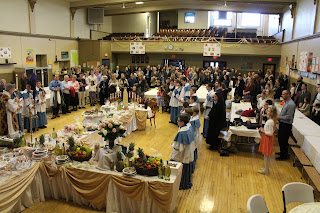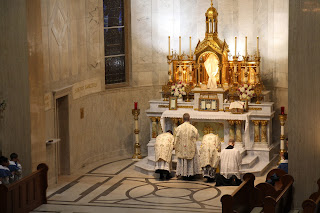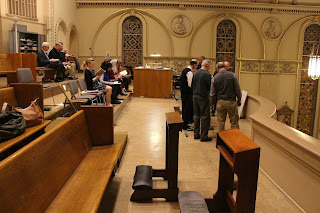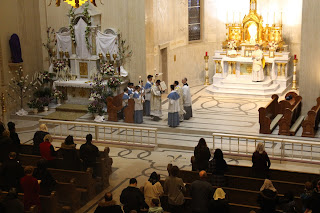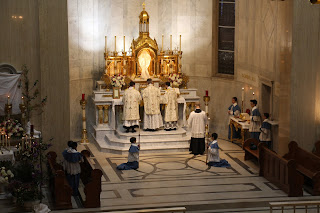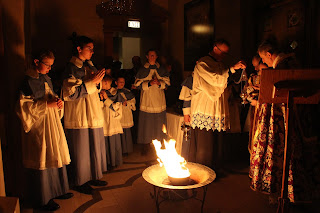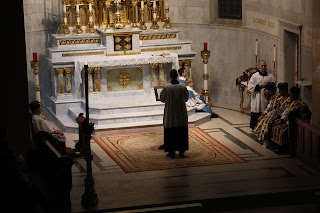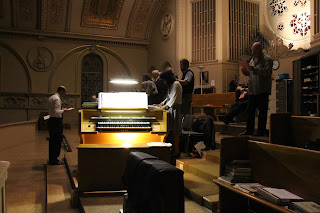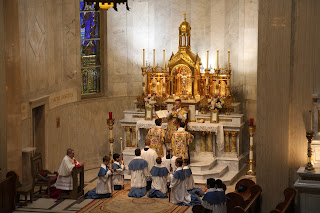Because I dont think it worthwhile to reinvent the wheel, below are a few resources"
The Traditional Case for Capital Punishment Fr. C. John McCloskey III
...
Most importantly, the Catholic Church’s Magisterium does not and never has advocated unqualified abolition of the death penalty. The U.S. bishops have conceded that Catholic teaching has accepted the principle that the state has the right to take the life of a person guilty of an extremely serious crime. Even the late Cardinal Joseph Bernardin – hardly a conservative – never stated that every criminal has a right to continue living, nor did he deny that the state has the right in some cases to execute the guilty. St. John Paul II, although opposed to most applications of the death penalty, thought the same.
Let’s hear what St. Augustine had to say on this topic: “ . . . there are some exceptions made by the divine authority to its own law, that men may not be put to death. These exceptions are of two kinds, being justified either by a general law, or by a special commission granted for a time to some individual. And in this latter case, he to whom authority is delegated, and who is but the sword in the hand of him who uses it, is not himself responsible for the death he deals. And, accordingly, they who have waged war in obedience to the divine command, or in conformity with His laws, have represented in their persons the public justice or the wisdom of government, and in this capacity have put to death wicked men; such persons have by no means violated the commandment, You shall not kill.” (City of God, Bk I, 21)
Augustine also said that capital punishment protects those who are undergoing it from further sinning, which might continue if their life went on.
If this is not enough, consider the thoughts of the Angelic Doctor, St. Thomas Aquinas, on this topic. Citing Exodus 22, which specifies that certain categories of wrongdoers shall not be permitted to live, Aquinas unequivocally states that civil rulers can execute justly to protect the peace of the state. St. Thomas finds frivolous the argument that murderers should be allowed to live in hopes of their repentance, questioning how many innocent people should have to suffer death while waiting for the guilty to repent. While capital punishment is not justifiable as an act of vengeance, according to Aquinas it is justifiable to help secure the safety of the community by removing a dangerous wrongdoer and deterring others from his example; in addition, it is an act of justice, allowing expiation for the wrongdoer’s sin.
CondemnedManPrayswithPriest
St. Paul in his hearing before Festus says, “If then I am a wrongdoer, and have committed anything for which I deserve to die, I do not seek to escape death.” (Acts 25:11) Very clearly this constitutes an acknowledgment on the part of the apostle to the gentiles that the state continues to have the power of life and death in the administration of justice. And of course when we first encounter Paul (Saul at that point), he is cooperating in the stoning to death of St. Stephen for the crime of blasphemy.
Pope Pius XII said, “In the case of the death penalty the State does not dispose of the individual’s right to life. Rather public authority limits itself to depriving the offender of the good of life in expiation for his guilt, after he, through his crime, deprived himself of his own right to life.”
The Catechism of the Council of Trent, composed under the supervision of St. Charles Borromeo, stated: “Far from being guilty of breaking this commandment [Thou shall not kill], such an execution of justice is precisely an act of obedience to it. For the purpose of the law is to protect and foster human life. This purpose is fulfilled when the legitimate authority of the State is exercised by taking the guilty lives of those who have taken innocent lives.”
None of the figures mentioned above were bloodthirsty individuals. All probably would have agreed with several modern popes that great care be used in modern conditions in applying the death penalty. But it’s doubtful they would have supported abolishing it.
Indeed, for any son or daughter of God, it is a great grace to know the time of one’s death, as it gives us the opportunity to get right with the Lord who will judge us at our death. Perhaps many people have been saved in this way by the death penalty. Who knows what would have happened if they had been allowed to linger in this life, one day possibly killing other people?
And there are other, utterly unexpected effects. The great Catholic convert and evangelist Frank Sheed wrote a book called The Map of Life. In one edition of the book, he tells of a man sentenced to death for murder. After reading Sheed’s book, the man wrote Sheed that, if what he had put down in that book about heaven and forgiveness was true, though he was offered clemency by the State, he decided to allow the execution, because he would be going to heaven now as a Catholic convert."
Read the whole of it HERE
Capital Punishment New Testament Teaching
by Fr. John A. Hardon, S.J.
Nowhere in the New Testament is capital punishment outlawed. On the contrary, the New Testament not only recognizes the right of the State to exercise authority in the name of God, but enjoins obedience to the State in applying the laws of God to its citizens.
As already noted, St. Paul explicitly declares that the State has authority from God to punish criminals. Christ Himself tells us to give to Caesar what belongs to Caesar. St. Peter enjoins Christians to be good citizens. Moreover, we are to obey civil authority – not mainly, but also "because you are afraid of being punished" (Romans 13:1-6).
But Sacred Scripture needs to be explained. As we reread the early Church's interpretation of the rights of civil authority, we find a remarkable thing.
From the beginning there were two variant interpretations of State authority relating to war and capital punishment. One interpretation was openly pacifist, and the other was non-pacifist.
Two names especially stand out that wrote belligerently against all war, and therefore espoused universal pacifism. Tertullian, 160-220, and Lactantius, 240-320 also fought strenuously against capital punishment of condemned criminals.
At the same time, the accepted Fathers of the Church never adopted these extreme positions, either outlawing all war as unjust or forbidding all capital punishment as inherently evil.
The Church's Teaching
Over the centuries, the Church's writers have defended the traditional Christian teaching on capital punishment.
St. Augustine explained St. Paul's teaching on the State's right to inflict capital punishment. Certainly the State may execute convicted criminals. But it should exercise Christian forbearance and thus temper juridical severity.
Pope Leo I in the fifth century and Pope Nicholas I in the ninth century made it clear that the Church herself could not be directly involved in capital punishment; but the pontiffs assumed that the State was divinely authorized to do so. So, too, the Councils of Toledo (675) and Fourth Lateran (1215) forbade the clergy to take direct part in the juridical process or sentencing of a person on a capital charge. But again, the councils took for granted that the State may condemn a convicted criminal to death and execute the sentence.
St. Thomas Aquinas made the classic defense of capital punishment. He reasoned that "if a man be dangerous and infectious to the community, on account of some sin, it is praiseworthy and advantageous that he be killed in order to safeguard the common good" (Summa Theologica II, II, 64, 2). Certainly the crime had to be very serious, and the welfare of society was at stake. But there was no question about the moral validity of capital punishment.
In the sixteenth century, the Council of Trent mandated the publication of the Roman Catechism. Promulgated by Pope St. Pius V in 1566, it has been confirmed by one sovereign pontiff after another. Thus in 1905, when Pope St. Pius X decreed the catechetical instruction to be given in the Catholic world, he mandated that the basis of this instruction should be the Roman Catechism. In dealing with the fifth commandment of the Decalogue, this fundamental catechism of Catholic doctrine declares:
There are some exceptions to the extent of this prohibition to killing. The power of life and death is permitted to certain civil magistrates because theirs is the responsibility under law to punish the guilty and protect the innocent. Far from being guilty of breaking this commandment, such an execution of justice is precisely an act of obedience to it. For the purpose of the law is to protect and foster human life. This purpose is fulfilled when the legitimate authority of the state is exercised by taking the guilty lives of those who have taken innocent life (The Fifth Commandment, 4).
In the twentieth century, Pope Pius XII provided a full doctrinal defense of capital punishment. Speaking to Catholic jurists, he explained what the Church teaches about the authority of the State to punish crimes, even with the death penalty.
The Church holds that there are two reasons for inflicting punishment, namely "medicinal" and "vindictive." The medicinal purpose is to prevent the criminal from repeating his crime, and to protect society from his criminal behavior. The vindicative is to expiate for the wrong-doing perpetrated by the criminal. Thus reparation is made to an offended God, and the disorder caused by the crime is expiated.
Equally important is the Pope's insistence that capital punishment is morally defensible in every age and culture of Christianity. Why? Because the Church's teaching on "the coercive power of legitimate human authority" is based on "the sources of revelation and traditional doctrine." It is wrong, therefore "to say that these sources only contain ideas which are conditioned by historical circumstances." On the contrary, they have "a general and abiding validity." (Acta Apostolicae Sedis, 1955, pp 81-2).
Behind this declaration of the Vicar of Christ is a principle of our Catholic faith. Most of the Church's teaching, especially in the moral order, is infallible doctrine because it belongs to what we call her ordinary universal magisterium. There are certain moral norms that have always and everywhere been held by the successors of the Apostles in communion with the Bishop of Rome. Although never formally defined, they are irreversibly binding on the followers of Christ until the end of the world.
Such moral truths are the grave sinfulness of contraception and direct abortion. Such, too, is the Catholic doctrine which defends the imposition of the death penalty.
Certainly Christianity, like Christ, is to be merciful. Certainly Christians are to be kind and forgiving. But Christ is God. He is, indeed loving and in fact is love. But He is also just. As a just God, He has a right to authorize civil authority to inflict capital punishment.
You can access Fr. Hardon's archives HERE
Capital Punishment New Testament Teaching
by Fr. John A. Hardon, S.J.
Nowhere in the New Testament is capital punishment outlawed. On the contrary, the New Testament not only recognizes the right of the State to exercise authority in the name of God, but enjoins obedience to the State in applying the laws of God to its citizens.
As already noted, St. Paul explicitly declares that the State has authority from God to punish criminals. Christ Himself tells us to give to Caesar what belongs to Caesar. St. Peter enjoins Christians to be good citizens. Moreover, we are to obey civil authority – not mainly, but also "because you are afraid of being punished" (Romans 13:1-6).
But Sacred Scripture needs to be explained. As we reread the early Church's interpretation of the rights of civil authority, we find a remarkable thing.
From the beginning there were two variant interpretations of State authority relating to war and capital punishment. One interpretation was openly pacifist, and the other was non-pacifist.
Two names especially stand out that wrote belligerently against all war, and therefore espoused universal pacifism. Tertullian, 160-220, and Lactantius, 240-320 also fought strenuously against capital punishment of condemned criminals.
At the same time, the accepted Fathers of the Church never adopted these extreme positions, either outlawing all war as unjust or forbidding all capital punishment as inherently evil.
The Church's Teaching
Over the centuries, the Church's writers have defended the traditional Christian teaching on capital punishment.
St. Augustine explained St. Paul's teaching on the State's right to inflict capital punishment. Certainly the State may execute convicted criminals. But it should exercise Christian forbearance and thus temper juridical severity.
Pope Leo I in the fifth century and Pope Nicholas I in the ninth century made it clear that the Church herself could not be directly involved in capital punishment; but the pontiffs assumed that the State was divinely authorized to do so. So, too, the Councils of Toledo (675) and Fourth Lateran (1215) forbade the clergy to take direct part in the juridical process or sentencing of a person on a capital charge. But again, the councils took for granted that the State may condemn a convicted criminal to death and execute the sentence.
St. Thomas Aquinas made the classic defense of capital punishment. He reasoned that "if a man be dangerous and infectious to the community, on account of some sin, it is praiseworthy and advantageous that he be killed in order to safeguard the common good" (Summa Theologica II, II, 64, 2). Certainly the crime had to be very serious, and the welfare of society was at stake. But there was no question about the moral validity of capital punishment.
In the sixteenth century, the Council of Trent mandated the publication of the Roman Catechism. Promulgated by Pope St. Pius V in 1566, it has been confirmed by one sovereign pontiff after another. Thus in 1905, when Pope St. Pius X decreed the catechetical instruction to be given in the Catholic world, he mandated that the basis of this instruction should be the Roman Catechism. In dealing with the fifth commandment of the Decalogue, this fundamental catechism of Catholic doctrine declares:
There are some exceptions to the extent of this prohibition to killing. The power of life and death is permitted to certain civil magistrates because theirs is the responsibility under law to punish the guilty and protect the innocent. Far from being guilty of breaking this commandment, such an execution of justice is precisely an act of obedience to it. For the purpose of the law is to protect and foster human life. This purpose is fulfilled when the legitimate authority of the state is exercised by taking the guilty lives of those who have taken innocent life (The Fifth Commandment, 4).
In the twentieth century, Pope Pius XII provided a full doctrinal defense of capital punishment. Speaking to Catholic jurists, he explained what the Church teaches about the authority of the State to punish crimes, even with the death penalty.
The Church holds that there are two reasons for inflicting punishment, namely "medicinal" and "vindictive." The medicinal purpose is to prevent the criminal from repeating his crime, and to protect society from his criminal behavior. The vindicative is to expiate for the wrong-doing perpetrated by the criminal. Thus reparation is made to an offended God, and the disorder caused by the crime is expiated.
Equally important is the Pope's insistence that capital punishment is morally defensible in every age and culture of Christianity. Why? Because the Church's teaching on "the coercive power of legitimate human authority" is based on "the sources of revelation and traditional doctrine." It is wrong, therefore "to say that these sources only contain ideas which are conditioned by historical circumstances." On the contrary, they have "a general and abiding validity." (Acta Apostolicae Sedis, 1955, pp 81-2).
Behind this declaration of the Vicar of Christ is a principle of our Catholic faith. Most of the Church's teaching, especially in the moral order, is infallible doctrine because it belongs to what we call her ordinary universal magisterium. There are certain moral norms that have always and everywhere been held by the successors of the Apostles in communion with the Bishop of Rome. Although never formally defined, they are irreversibly binding on the followers of Christ until the end of the world.
Such moral truths are the grave sinfulness of contraception and direct abortion. Such, too, is the Catholic doctrine which defends the imposition of the death penalty.
Certainly Christianity, like Christ, is to be merciful. Certainly Christians are to be kind and forgiving. But Christ is God. He is, indeed loving and in fact is love. But He is also just. As a just God, He has a right to authorize civil authority to inflict capital punishment.
You can access Fr. Hardon's archives HERE
There is also wonderful story about the graces offered to souls on death row
+JMJ+

















































